WOW. Where do I begin (belatedly)? All I have to say (well, maybe not “all”) is that BIG (very big) things are happening Down Under! I returned at the end of July from a h-u-g-e series of speaking events throughout Australia on The Paleo Way tour in the amazing company of celebrity chef (and dear friend), Pete Evans, fitness guru, Luke Hines and Australian rock icon, Wes Carr. Let’s just say that the Primal Body, Primal Mind way of eating is taking Australia by storm. We spoke to enthusiastic audiences totaling in the thousands (and thousands) throughout the tour and had events in seven cities: Brisbane, Sydney, Hobart, Adelaide, Melbourne, Perth and Dubbo.
This was my third tour in Australia and it was an immensely gratifying thing to be approached by countless people sharing their own enthusiastic (and often tear-jerking) stories of positive personal transformation and renewed health and vitality. I recognized a number of faces from a couple of years ago and seeing the incredible growth of interest in all this since then was, well, a bit overwhelming (in the best possible way).
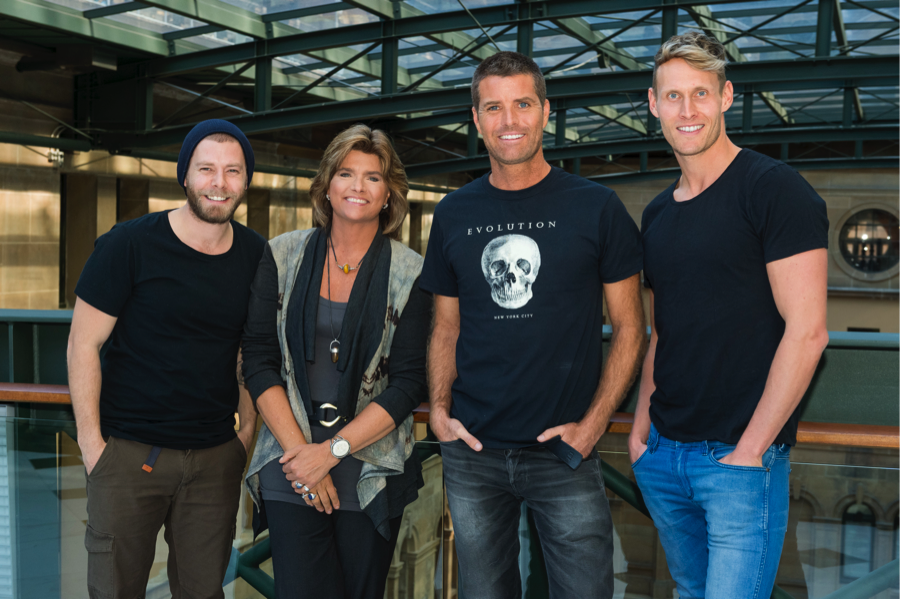
A couple of years ago, I received an unassuming email from an Australian celebrity chef by the name of Pete Evans. He basically said that my book had changed his life and the life of his partner and family and that he wanted to meet me. We agreed to talk over Skype–with me in Portland, Oregon and he in Perth, in Western Australia (pretty much the edge of the world). We forged a wonderful heart-felt connection over that conversation. Over the next two years we remained in sporadic contact and during my return trip to Sydney in 2012 we finally met at his home at (then) Bondi Beach. We spent an entire evening together with Pete (who prepared a glorious meal), his gorgeous and wonderful partner (fiancé) Nic Robinson, and Pete’s two beautiful and delightful young daughters, Chilli and Indi. We agreed that we wanted to find a way to somehow work together to help make positive change in others and in the way the public looks at food. Pete shares my deep passion for all this and a genuine drive to see real change in the world and in the health of others and he believed that together we could do this in a massive way.
Last February, 2013 Pete and his partner, Nic flew to Portland, Oregon to film me (and a few other health luminaries) for his upcoming Paleo television program slated for release in Australia and the UK. We wandered with a PBS film crew through the streets of Portland for close to three hours doing our interview, then spent the next several days just hanging out and getting to know one another better. We all became family in short order and decided we wanted to find bigger and better ways of collaborating. A few months later, Pete contacted me and said he had found the perfect collaboration, all beginning with The Paleo Way tour. The rest, as they say, is soon to make history.
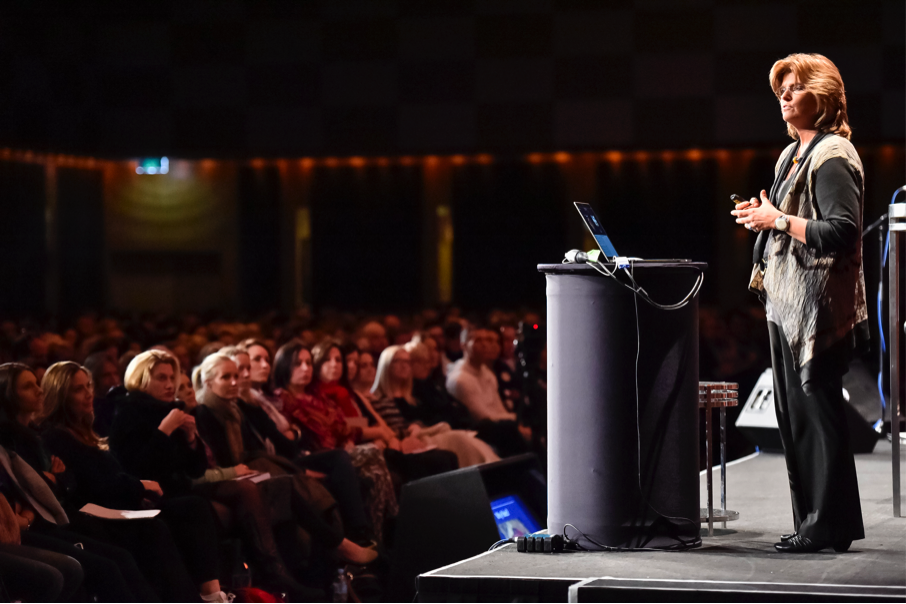 Speaking to a h-u-g-e crowd in Sydney
Speaking to a h-u-g-e crowd in Sydney
Fitness guru, Luke Hines had been a contestant on Pete’s number one rated television show in Australia, called ‘My Kitchen Rules’ and they had gotten to know each other by the end of the season, ultimately becoming good friends. Luke became a “Primal convert” after Pete turned him on to my book and Luke was eager to play a role in our future endeavors. Luke has been a celebrity personal trainer and is enormously (not to mention deservedly) very well-liked. He is positive, energetic and a genuinely inspiring presence. He has a great sense of humor and a warm, open heart. He was also a blast to work with.
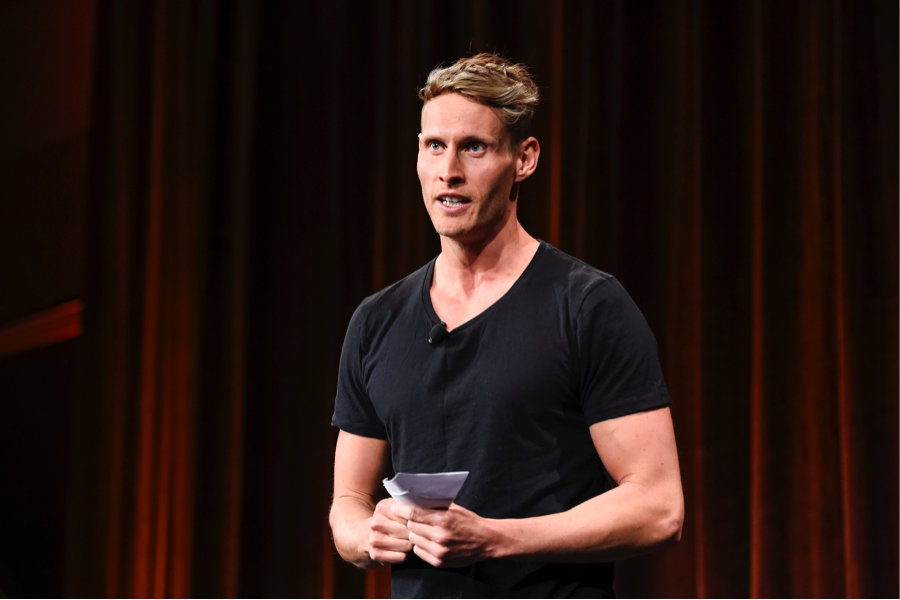 Luke Hines
Luke Hines
Wes Carr, known throughout his country for having won first place on Australian Idol has since become a bona fide Australian rock star, with several successful albums and tours (recently working on a project with Joe Cocker). It turns out that Wes, too had a personal story to tell about his physical and emotional health related to having stumbled across my book during a particularly dark time in his life. Not only was his physical and mental health turned around, but it also ultimately transformed the health of his young, beautiful son, Willow. Wes wanted to take part in the tour so he could have an opportunity to tell his (and his son’s) story.
Willow seemed normal enough at birth, but following a series of vaccinations began to change and exhibit symptoms of what was later diagnosed as autism. (Note: Wes did not claim that the vaccinations had caused the symptoms, but things didn’t seem to be the same that day forward). Their sweet happy boy had begun screaming and crying with frightening intensity at night with no help and no answers from his doctors. He had also begun staring off into space for prolonged periods of time, not speaking or connecting at all with anyone and not playing at all. He had also begun the disturbing habit of self-stimming by hand flapping throughout the day. Wes and his wife, Charlotte were utterly terrified that they might lose him forever. They made the decision to change their son’s diet, removing all gluten and dairy, GMO’s and all processed foods and adding in nourishing bone broths and healthy fermented and cultured foods, plus (you guessed it) lots of healthy, grass fed, nourishing fat. In a nutshell, in no time at all they had their beautiful son back– smiling, engaged in life, playing with other children, being loving and at last— normal. OH– and Willow’s absolute favorite food? Homemade liver pate! Wes recently released a new sure-to-be hit single, called Anthem— a song and a YouTube video all about personal transformation. You can view his amazing and powerful YouTube video here.
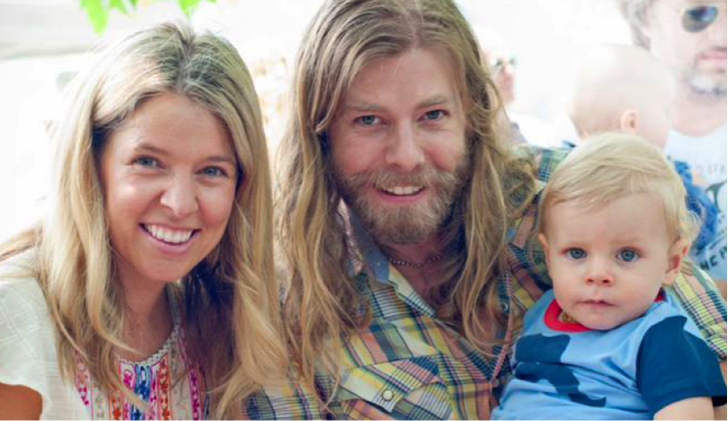 Wes, Charlotte and Willow
Wes, Charlotte and Willow
Charlotte has created a healthy web site for other families of kids like Willow: www.BubbaYumYum.com
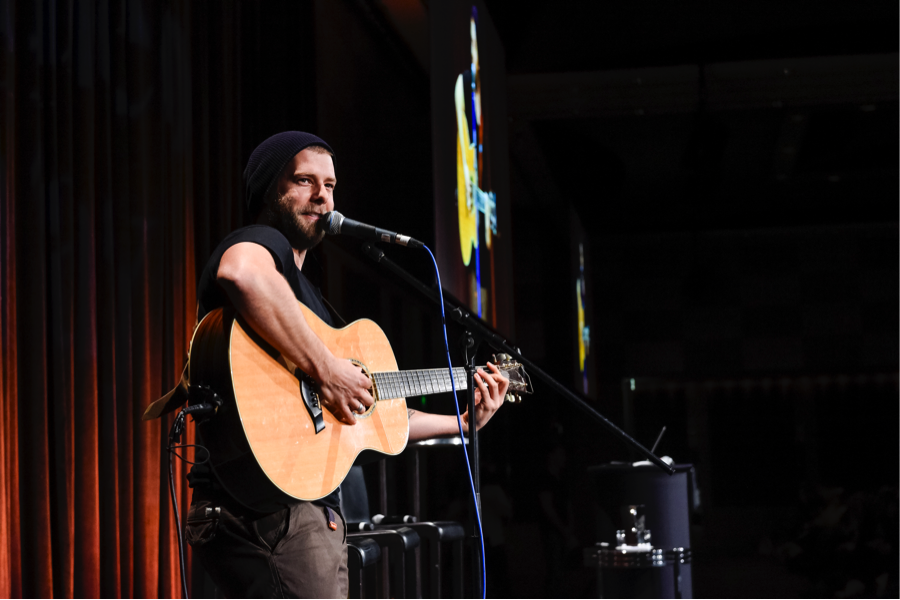 Wes Carr – performing onstage on The Paleo Way tour
Wes Carr – performing onstage on The Paleo Way tour
Wes is one of the most genuine, warm and talented people I have met in a very long time and an incredible person I am proud to include in my life as a heartfelt friend. We also had a blast jamming back stage in Perth.
Together, we all spoke to massive and enthusiastic audiences everywhere we went and the response was amazing.
We also had an amazing crew that came everywhere with us, making sure that everything went smoothly. Many thanks to Yvette, Lisa and Courtney at Earth Events (and all the “Earth Angels) from Earth Events for keeping us on track (and being generally awesome)!
Here is a after tour wrap up blog post by Earth Events: The Paleo Way Wrap
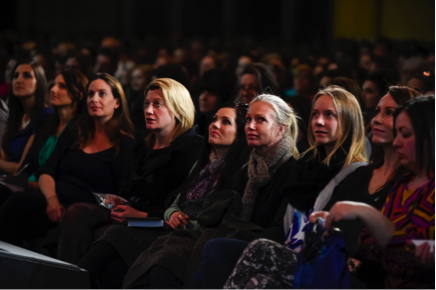
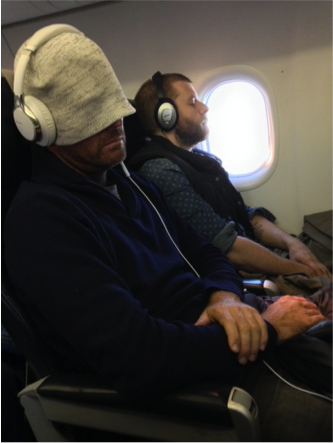
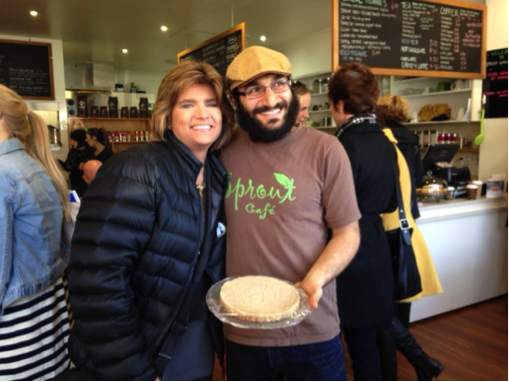
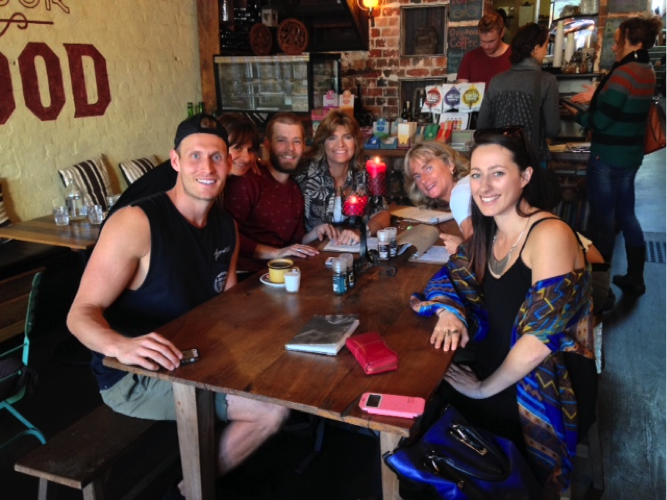
The tour schedule was utterly exhausting (note Pete and Wes zonked out pictured above) and we were boarding planes almost daily. The audiences were amazing, as were the locations. Our last stop of the tour in Dubbo was a special joy for me, where I had spoken a year prior in an all-day mostly solo event to an engaged audience of hundreds. The Paleo movement and fan base for Primal Body, Primal Mind sparked by my earlier tour is a growing and well-organized phenomenon there and we attracted quite a bit of media. It felt like a real homecoming. Primal/Paleo potlucks are happening regularly throughout the region, thanks in part to Amanda Parrish (Finding Eco), and her dad, Mike Parrish (Healthy Life Dubbo) –two dedicated forces for good in Australia and the world. I truly have some wonderful friends there (a heartfelt shout out to Grahame and Ros Rees of nearby Bathurst), and Dubbo is the home of one of my favorite Paleo cafes ever: ‘Sprouts’. Their chef, Wassim—pictured above with Yours Truly holding a Paleo-friendly treat he lovingly prepared and gifted to the crew—is among the most talented of chefs anywhere in Australia. He is a culinary perfectionist in the kitchen, for sure—devoted to the utter glorification of real, nutrient dense food. He’s also a terrific guy.
In the last pic (above) we were all grabbing a bite to eat at a fabulously healthy café in Perth called Solomon’s. They even served grass-fed, homemade bone broth on the menu! I was actually fairly impressed by the availability of Real food throughout the many places we visited in Australia.
Our tour attracted tremendous media attention wherever we went and was very positively received by the many wonderful people that attended it. In short, we had an incredible time and I like to think we were able to do an effective job of introducing this revolutionary natural approach to diet and health to thousands of enthusiastic Aussies in the land Down Under.
The Paleo Way Tour Video
Stay tuned for upcoming news about the next (yes—next) tour!
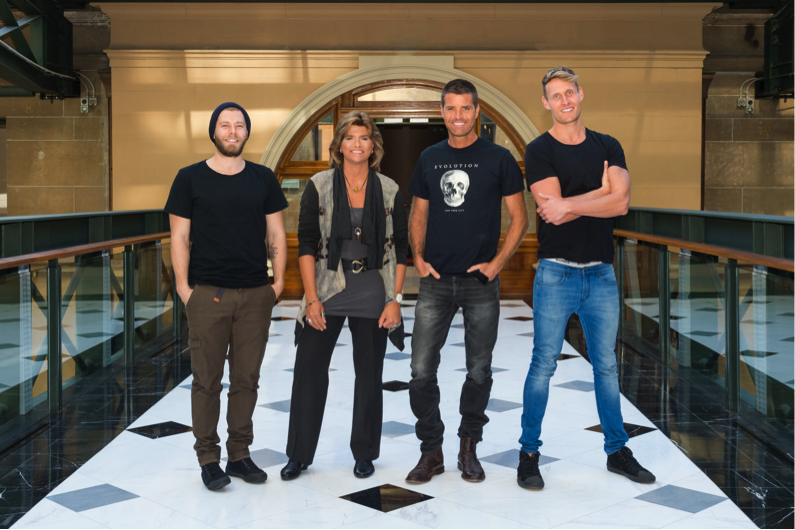
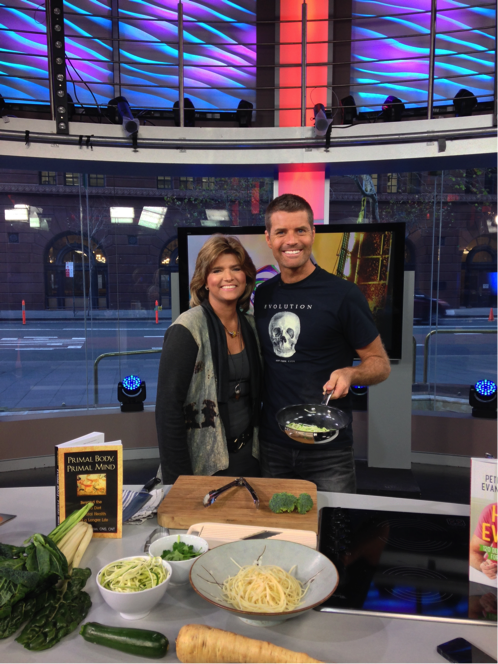 Pete’s and my appearance on Sydney, Australia’s ‘Sunrise’ TV show
Pete’s and my appearance on Sydney, Australia’s ‘Sunrise’ TV show
AFTER THE TOUR…
Immediately following the tour, Lisa and I traveled to the sleepy surfer town of Byron Bay for a day or two of badly needed R&R. During our stay, we asked the locals where the best place was to go for fabulous and healthy food. A number of people “in the know” told us about a place not too far from our hotel called ‘The Roadhouse’; an out of the way, tiny local hangout joint located just up the road. The atmosphere was relaxed, cozy, unassuming and warm and the menu boasted the largest selection of whiskey anywhere in the area (OK—less than Primal). That said, it was also filled with a beautiful selection of organic, free range, farm-to-fork fare, and even served things like fermented vegetables, green juices and homemade kombucha! I ordered fresh, locally caught fish lightly broiled (to absolute mouthwatering perfection) and prepared atop of a platter of fresh, local, organic sautéed vegetables. There were even homemade cultured vegetables on the side! OMG…I was never so impressed with a meal so perfectly prepared as I was at this restaurant. It is a meal I will not soon forget. The young proprietor, by the name of Liam Flanagan came by the table to make sure everything was all right. Naturally, I gushed about the fabulous food and how impressed I was. He then proceeded to ask me if my name was Nora Gedgaudas. I think my jaw audibly hit the table. “Why…uh…yes…” –It turns out that Liam happens to be a big fan and was inspired to create the menu he did– in part based on what he read about in my book! What are the odds? Needless to say, if you ever happen to be in Byron Bay, be sure to stop by The Roadhouse for one of the best meals you’ll ever have. Tell Liam I sent you. 🙂
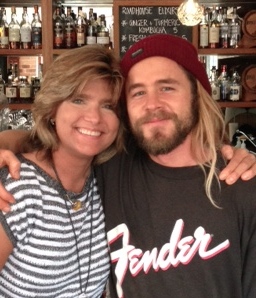
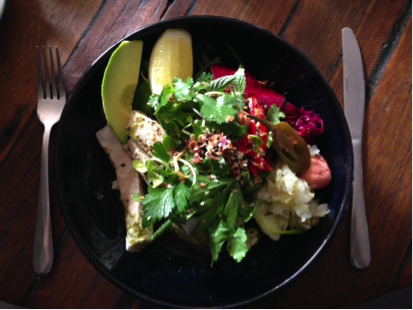
Following our brief but welcome respite on the beach, Lisa and I were extremely fortunate to be able to also spend some real quality time in Australia’s Outback. I have had a long-term fascination with Aboriginal culture and set my travel sights on Uluru (formerly known as Ayer’s Rock). The harsh climate and terrain of the area surrounding Uluru was easily matched by its stark, yet strikingly rich beauty.
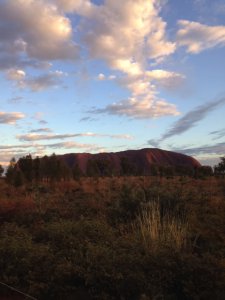 Sunrise at Uluru
Sunrise at Uluru
There are a few locations more iconic in Australia’s Outback than Uluru. This ancient sandstone monolith has been a sacred site for the Aboriginal people that have inhabited this place for literally tens of thousands of years. Despite the now popular tourist destination that it has become, the power of this place continues to be palpable.
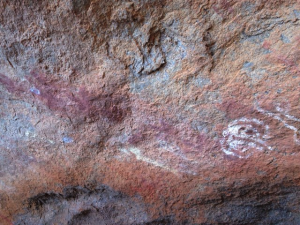 40,000 year-old cave art
40,000 year-old cave art
I had the opportunity to learn something about the Aṉaŋu (pronounced “Ananoo”) culture of this particular region (one of many ancient Aboriginal groups in Australia) and many of the traditional foods, hunting implements and tools they once used. The term Aṉaŋu essentially translates to “human being”.
A number of Aboriginal people in Australia still continued to live their traditional life in the bush until as recently as 1985, when the very last of them sadly abandoned “the old ways” and resigned themselves to modern life. A lot has changed since then— not the least of which has been the health of the Aboriginal people.
Hint: NOT for the better.
Our Aṉaŋu tour guide led us on a hike around the base of this magnificent ancient natural wonder, stopping along the way to point out places of particular significance and carefully explaining the rich history of this region and his people. At the cultural center complex located in the nearby shadow of Uluru we were treated to a demonstration of numerous Aboriginal implements traditionally used in the old days (and occasionally even still today in some places). We learned about digging sticks and getting at witjuti grubs under mulga shrubs. Witjuti grubs were the single most important food insect in the Outback and are a terrific source of protein and fat. They are white, juicy, fat-n-sassy grubs that when roasted taste like—supposedly–fried eggs. When eaten raw they supposedly taste more almond-like. –I’ll take their word for it.
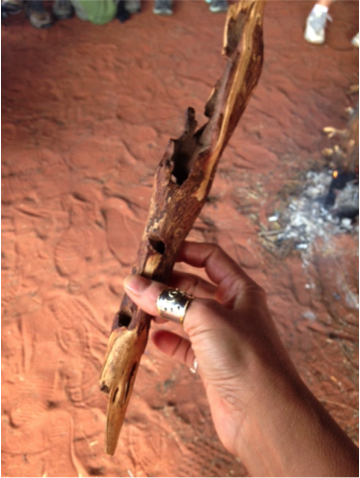 A section of hollow root from a mulga shrub where juicy witjuti grubs might be found
A section of hollow root from a mulga shrub where juicy witjuti grubs might be found
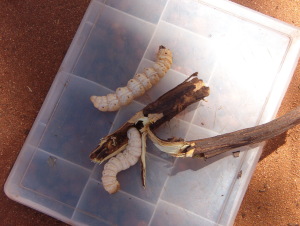 A couple of plump, tasty widjuti grubs[i]
A couple of plump, tasty widjuti grubs[i]
The Aṉaŋu hunted animals using 8-10 foot long spears thrown with a woomera (a form of atlatl – see below example). They were typically carved from mulga wood—an incredibly durable hardwood from which they also frequently carved their spearheads. The ingenuity of the woomera is such that it additionally could serve as a bowl, a cutting tool and a firestarter. –Sort of the Aboriginal version of the Swiss Army knife. The woomera spear was known as the fastest weapon in the world pre-1800’s and the extra energy gained from the woomera’s use has been calculated as four times that from a modern compound hunting bow[ii]. That’s some incredible, powerful and versatile ingenuity!
 Example of a woomera (close up of spear hook at tip below)
Example of a woomera (close up of spear hook at tip below)
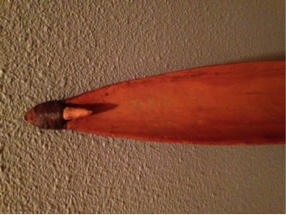
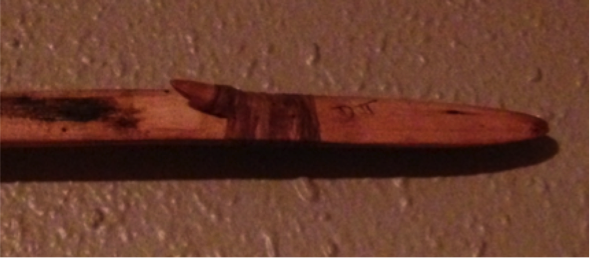 Woomera mulga-wood spear tip. Barb wound with kangaroo sinew
Woomera mulga-wood spear tip. Barb wound with kangaroo sinew
 Overlapping Piranpa and Aṉaŋu calendar
Overlapping Piranpa and Aṉaŋu calendar
The Aṉaŋu never calculated their annual calendar by Piranpa (white man) dates/seasons, but only by their own particular seasons (six of them); which were logically characterized by the kinds of foods that were available to them at different times of the year or under different conditions. Some of the recognized seasons included Wanitjunkupai, which translates to “beginning of the cold weather”, Tjuntalpa, (meaning the time when clouds roll in from the south), Wari (meaning “cold time”), Piriyakutu (“the warm, windy time when animals breed and flowers bloom”), Kulu (“hot time”) and Itjanu (“the hot and rainy time”). They referred to drought as Ailuru. To find enough food the Aṉaŋu often had to travel great distances. It could be several days walk from waterhole to waterhole and it took a great deal of strength of body, experienced knowledge and superior powers of observation to traverse these distances and successfully find food and water. Their very lives depended upon the accuracy of these skills. One can scarcely imagine more harsh living conditions on planet Earth than the Australian Outback. That said, the Aṉaŋu people claim the climate has actually changed quite a bit since traditional times. They say that rain does not fall the same way or at the same time as it did in the past and there is much more dry, or Ailuru time today. Bush foods are no longer anywhere near as common. In fact, it is unlikely that even the stealthiest and most knowledgeable traditionally-inclined Aṉaŋu person alive today would be able to successfully live on the land anymore as they once did. The dingoes are largely gone now from the wild, and wildlife such as kangaroos, emu and wallabies are nowhere near as abundant and are only scarcely seen. Many native plant species are gone, including the ones they used for food. Easily the most abundantly found mammalian species anywhere in the Outback today are feral camels! These were brought to Australia with early explorers from the Middle and Far East. Many were abandoned or got loose along the way– and rather than perish they managed to thrive. –And thrive they did. Today there are in excess of 800,000 feral camels wandering loose in the Australian Outback! They are considered a nuisance, as they damage and over browse native plants.
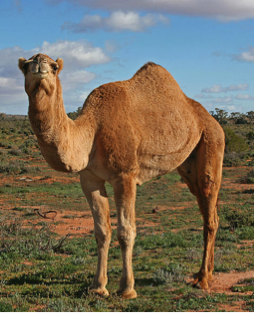
The feral camels are regularly seen in areas surrounding Uluru, though I never had the occasion to actually spot one while I was there (though certain enterprising individuals have opened local camel ranches for the tourists). Non-native grasses from Africa have also been inadvertently introduced to the region and have led to the decimation of numerous native plant species there.
The Aboriginal Land Rights (Northern Territory) Act was passed in 1976, which finally—by law– recognized the rights of Aboriginal people to their ancestral lands. It took nine more years for the Aṉaŋu to be presented with the Freehold Title deeds for the Park, who, in turn (by conditional agreement), leased the land back to the Australian Government through the Director of National Parks (formerly the Australian National Parks and Wildlife Service) for “99 years”. The Aṉaŋu at last officially own the ‘Uluṟu-Kata Tjuṯa National Park’ (formerly Ayers Rock – Mt Olga National Park) lands, but operate the Park itself through what is referred to as “joint management” (i.e., in tandem with the Australian government). The Aṉaŋu continue to hunt certain animal species such as red kangaroos, emus, other birds and lizards in remote areas of the Park and on Aṉaŋu land elsewhere. Some even utilize traditional hunting implements such as the woomera and boomerangs to do this on occasion, though their true hunter-gatherer way of life is essentially (and sadly) now gone. Most of what Aboriginal people eat tends to come from regular grocery stores nowadays. Beyond unfortunate.
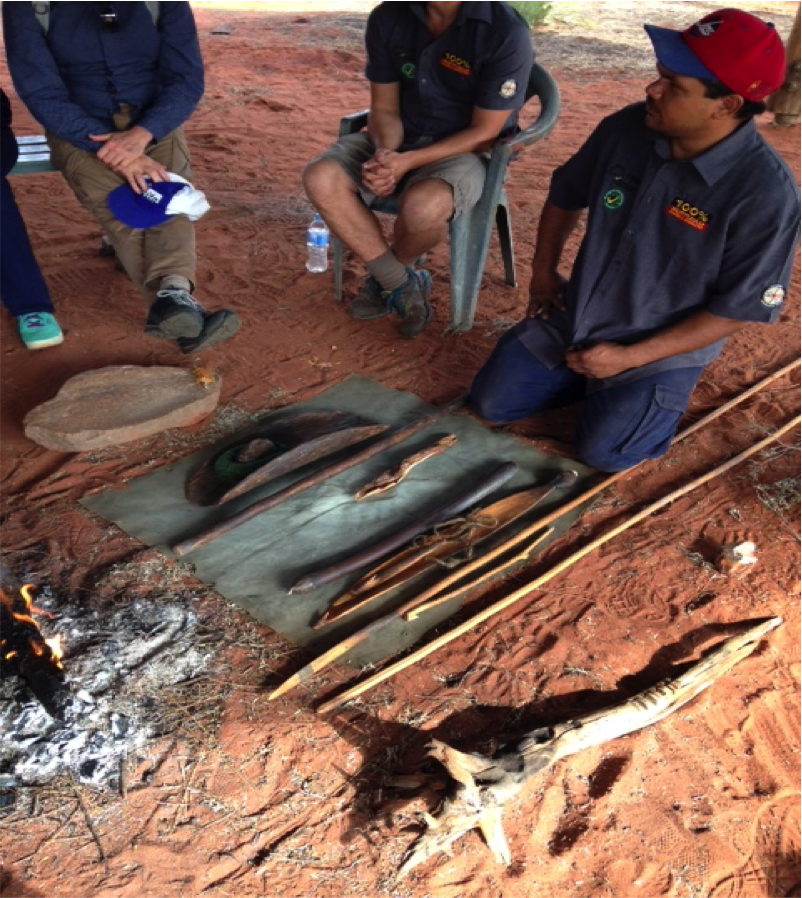 Our Aṉaŋu guide displaying and demoing numerous traditional and fascinatingly innovative Aboriginal implements
Our Aṉaŋu guide displaying and demoing numerous traditional and fascinatingly innovative Aboriginal implements
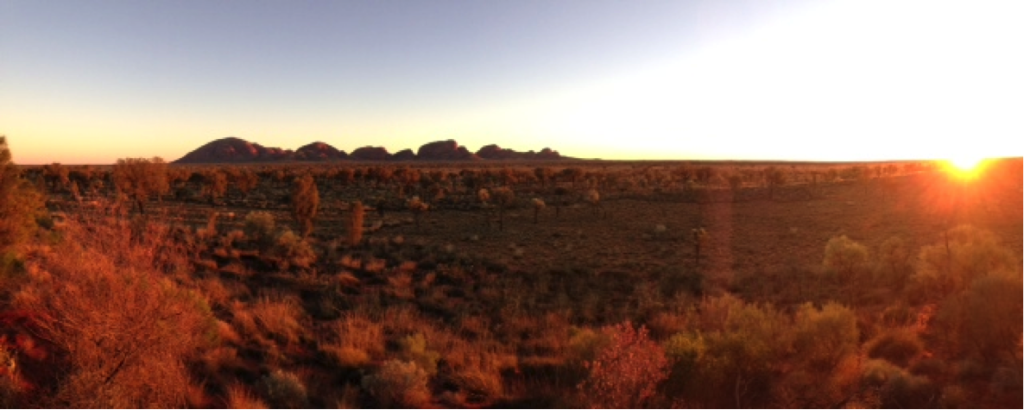 Sunrise at nearby Kata Tjuta
Sunrise at nearby Kata Tjuta
Another nearby source of natural wonder was a second megalithic cluster of rock outcroppings known as The Olgas, or (more traditionally) Kata Tjuta (which translates to “many heads”). It is made up of a group of 36 conglomerate rock domes that date back 500 million years. Geologically, Kata Tjuta is intimately related to Uluru (see illustration below), arising from essentially the same underground geologic substrate. Where Uluru is primarily sandstone, however, Kata Tjuta is comprised mainly of conglomerate rock. Kata Tjuta is still supposedly home to a species of wallaby (called “black footed rock wallabies” – see below) that can sometimes be seen navigating the treacherous steep terrain in the canyons there.
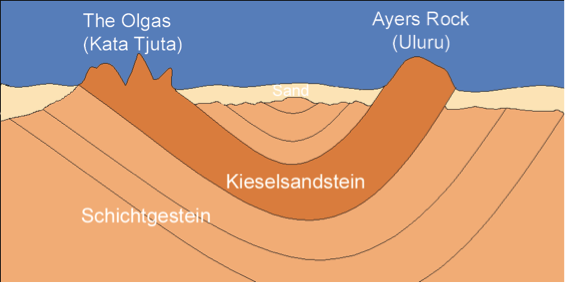 The geologic formation making up both Uluru and Kata Tjuta[iii]
The geologic formation making up both Uluru and Kata Tjuta[iii]
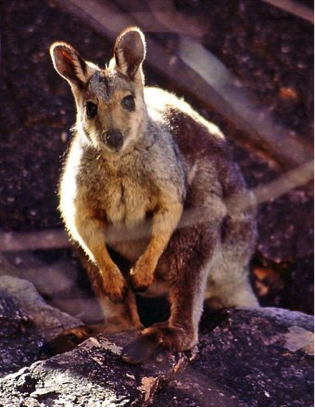 An adorable Black-Footed Rock Wallaby[iv]
An adorable Black-Footed Rock Wallaby[iv]
A popular tourist activity (or tourist hazing) when visiting Uluru involves awakening at unreasonably early hours to watch the sunrise at either Uluru or Kata Tjuta. We were gullible enough as naïve tourists to attempt both (on different days, of course). One boards a bus—with bleary eyes– at about 4:00 AM in what feels like the dead of night in order to travel to certain specific locations where the colorful sunrise spectacle can be observed (assuming you are awake). The air temperature in the photo below, shortly after sunrise, was about 30°F/0°C. (I heard that temps can get as low as 23°F/-5 °C at night in the winter). There was literally frost on some of the surrounding vegetation. I was told that Aboriginal people endured temperatures like this in winter without any real clothing to speak of, and through mainly huddling—with or without fire and with little to no shelter. The Minnesotan in me tips my wool hat to this kind of resilience and stands in uncomprehending awe of what we once must have endured as a species. “Primitive,” my ass. These people were superhumans!! We are total wimps by relative modern-day comparison.
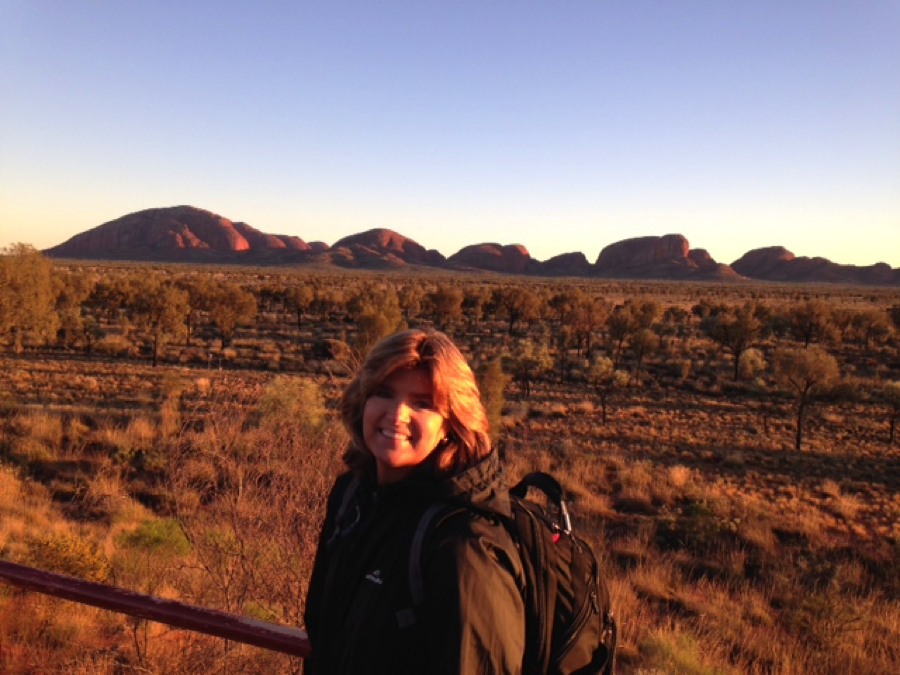 Yours Truly posing at “stupid o’clock” watching the sunrise (with 30 degree F temps)
Yours Truly posing at “stupid o’clock” watching the sunrise (with 30 degree F temps)
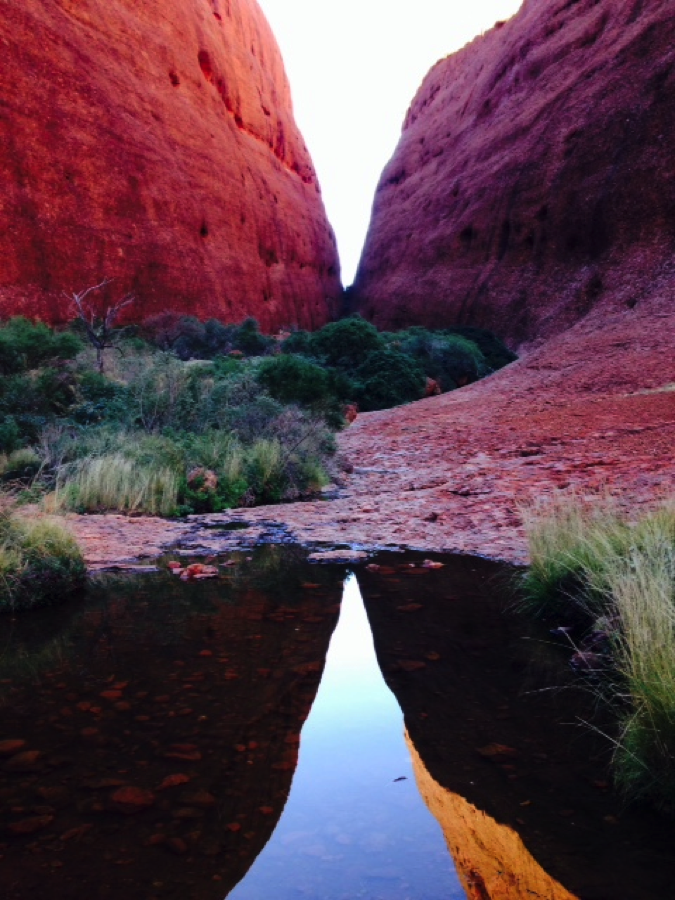 Canyon and a rare, ancient spring at Kata Tjuta
Canyon and a rare, ancient spring at Kata Tjuta
We hiked deep into Kata Tjuta to find this magnificent spot. It is considered a sacred place containing spirits and knowledge in its caves and nooks considered very powerful and even purportedly “dangerous”. A mildly hallucinogenic plant grows here, also—related to the tobacco family and having only mildly stimulating properties when ingested in small amounts (no—I didn’t try it). This beautiful spring must have been incredibly important at one time and was likely widely utilized by humans and animals alike. It was also extremely well protected by the looming, precipitous and sentinel-like canyon walls. It was extraordinarily peaceful here. We made a point of enjoying several minutes of pure reverent silence in this place. It was magical.
One particularly beautiful flower in the Outback known popularly as the “honey flower” served as perhaps the only source of sugar and the closest thing to “candy” for the Aṉaŋu in former times.
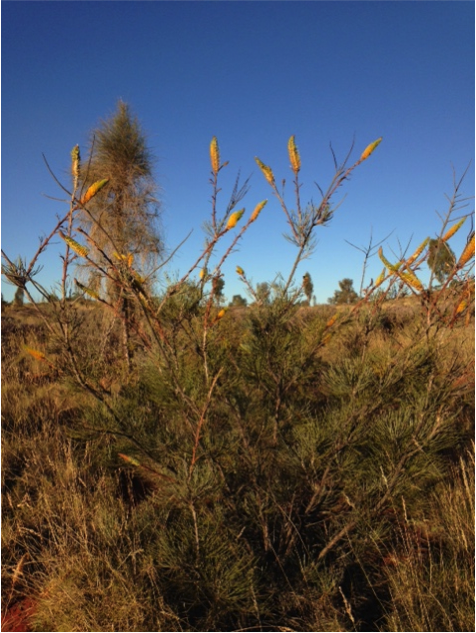 Grevillea ‘Honey Gem’
Grevillea ‘Honey Gem’
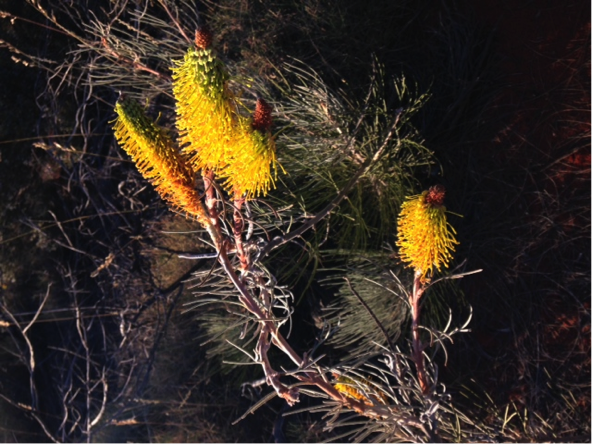 It’s beautiful, sweet blossom, up close
It’s beautiful, sweet blossom, up close
The Outback Grevillea spp “honey blossom”–typically left attached to the rest of the shrub (so as to allow it to regenerate)–was sucked upon by children and sweet-loving adults, and contained a sweet nectar that was enjoyed as a seasonal treat. The total intake for sugar for the “primitive” Aṉaŋu (I was told) was approximately 1 tablespoon per person, per year.
My Outback sojourn led me to an enhanced appreciation of the ingenuity and resilience of our most ancient ancestral forebears. It amplified my deep respect for these cultures and my anguished sorrow for what has been lost.
The most painful thing about this journey for me was seeing what has become of the Aboriginal people. To see an Aboriginal person that isn’t obese is almost unusual. The local supermarket at Uluru scarcely contains anything I would be inclined to think of as food (it was bad enough finding anything we could eat in the finer local hotel restaurants). Aisle after aisle is filled with heavily processed, prepackaged substances with unpronounceable ingredients masquerading as food. The conveyor belts at the checkout lanes there are laden with white bread, sodas, bottles of canola oil, cereals, sweet rolls, canned goods, snack foods and a smattering of limp vegetables here and there, along with the occasionally spotted shrink-wrapped factory farmed meats. It is horrible—and the results upon the local Aṉaŋu population’s health are obvious. Devastating. Weston Price once said (back in the 1930”s) that these were among the healthiest and strongest people he had seen in all his travels. He would mourn their deplorable state of health today.
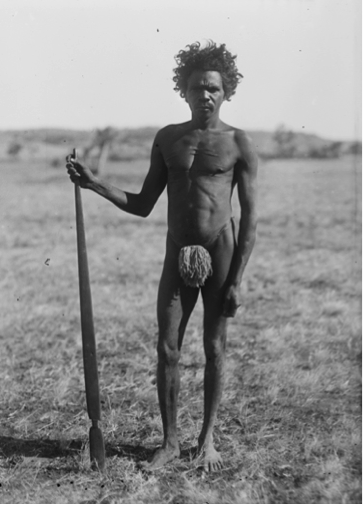 1922 photograph of an Aboriginal hunter from the National Museum of Australia[v]
1922 photograph of an Aboriginal hunter from the National Museum of Australia[v]
I am hopeful to return to the Outback again and explore other, more remote regions of this ancient landscape and its people. Witnessing the catastrophic health changes that have befallen this ancient people group inspires me with the awareness how important the example set for us by our earliest aboriginal antecedents is. The genocide of the Australian Aboriginals (and in fact that of all native peoples throughout the world) was not the product of guns—but of food. It speaks to the potential genocide of us all unless we can remember some of the very things that the earliest humans once had the luxury of taking for granted:
The availability of unadulterated nutrient dense, sustainable natural food, fresh air, clean water, a symbiotic relationship with the surrounding natural world and a first-hand knowing of where our food came from. We also experienced community and the grounded awareness/comprehension that humankind is a mere thread in the web of life and did not weave it. To paraphrase Chief Seattle, whatever we do to that web, we do to ourselves.
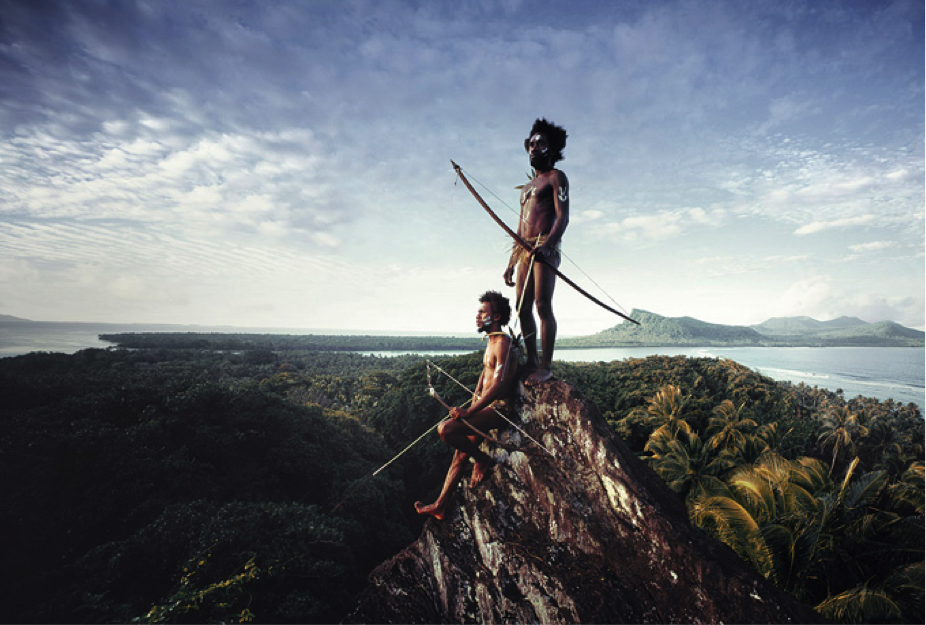 From ‘Before They Pass Away’ by Jimmy Nelson[vi]
From ‘Before They Pass Away’ by Jimmy Nelson[vi]
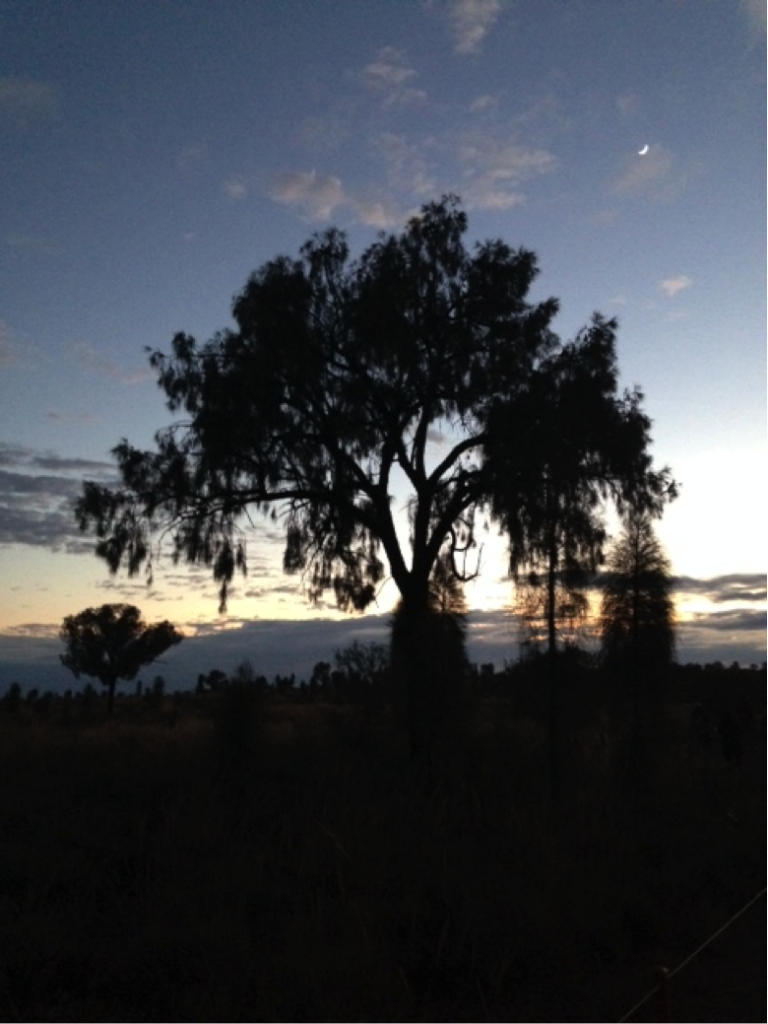 Beautiful sunrise at Uluru
Beautiful sunrise at Uluru
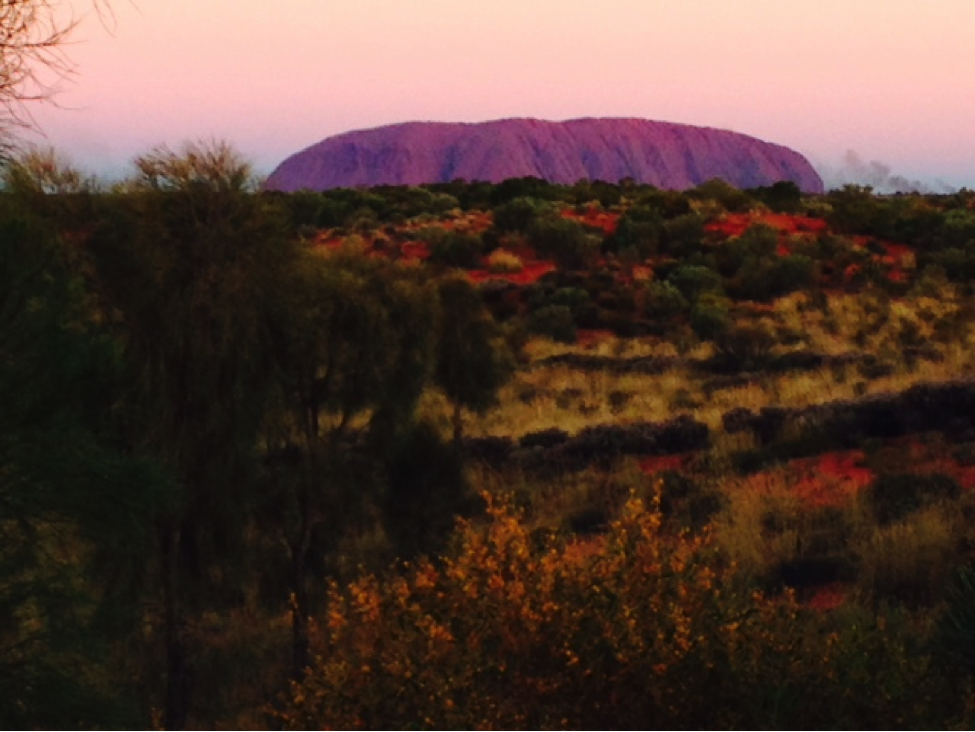 Sunset time – magical
Sunset time – magical
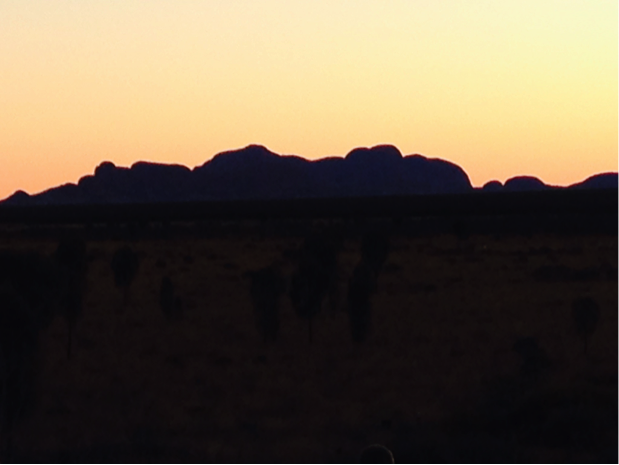 Sunset at Kata Tjuta
Sunset at Kata Tjuta
Image sources:
[i] Image from: http://en.wikipedia.org/wiki/Witchetty_grub#mediaviewer/File:Witchetty_grub.jpg
[ii] “Extinction’s group theory” – The Sydney Morning Herald (Fairfax Media). 25 June 2004. Retrieved 21 October 2011
[iii] Image source: http://commons.wikimedia.org/wiki/Uluru#mediaviewer/File:Schema_Kata_Tjuta_Uluru.png
[iv] Image source: http://en.wikipedia.org/wiki/Ulu%E1%B9%9Fu-Kata_Tju%E1%B9%AFa_National_Park#mediaviewer/File:Black-footed_Rock-wallaby%28small%29.jpg
[v] Image from: http://commons.wikimedia.org/wiki/File:Man_with_a_spear-thrower,_photograph_by_H._Basedow.jpg
[vi] http://www.beforethey.com/
From Chef Pete Evans:
I’m incredibly excited to announce a new project launching soon called ‘The Paleo Way’.
‘The Paleo Way’ is a 10 week vibrant health and fitness program tailored to a Paleo lifestyle.
I’m looking forward to sharing the journey as it comes to fruition.
Tour Update:
Following the success of The Paleo Way tour, early next year we will be hitting the road again for ‘The Paleo Way – Learn to Cook’ tour.
This time around we are cooking with an emphasis on fermenting basics, children’s lunch boxes, budget family cooking, bone broths and a whole lot more with some super special guests that you are going to love.
Can’t wait to share more in the coming weeks.
Pete
PS. To keep up with The Paleo Way Tour updates, please enter your email address here: The Paleo Way
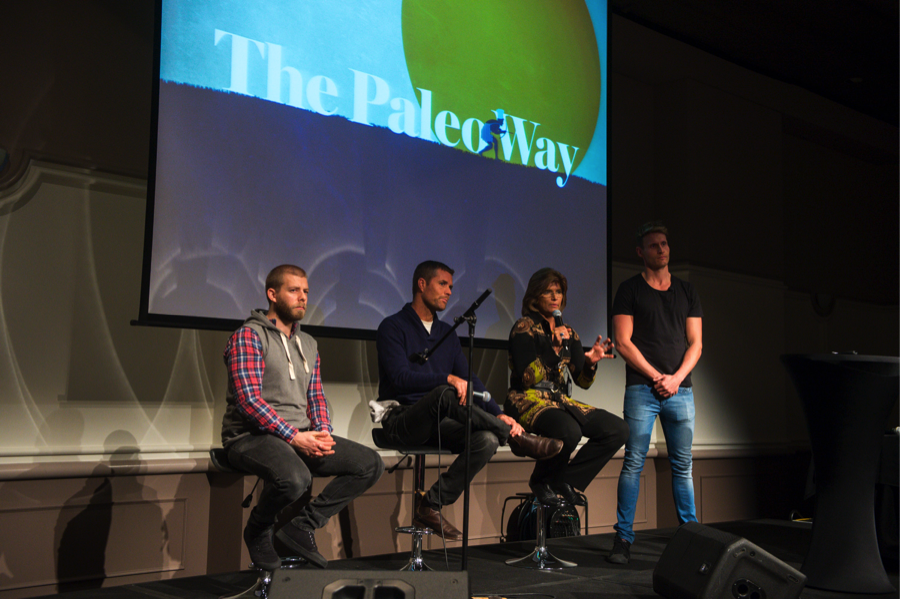
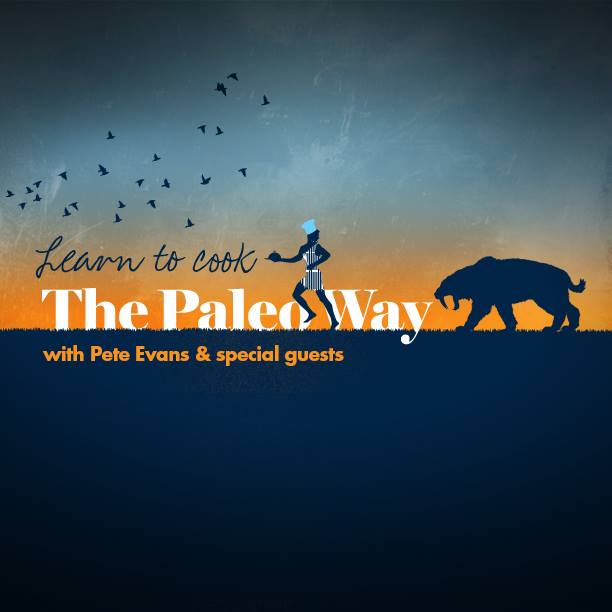
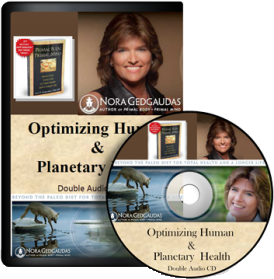

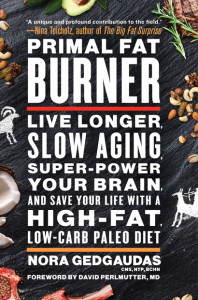
Wonderful reading Nora!
I spent a few years of my youth living in the Kimberely region of Western Australia – truly one of the most remarkable places on earth! My family spent our weekends ‘out bush’ & we would camp amongst some of the most spectacular scenery you can imagine & learn about bush tucker from some of the locals. This was a very special time in my life & when you return to Australia I would absolutely encourage you to go north west!
I read your book Primal Body, Primal Mind a couple of years ago and it changed my life (you seem to get this all the time haha!) I was delighted to attend your talk in Adelaide & I look forward to your next visit!
Thank you for all that you do!
Julia.
Hi Nora,
I really enjoyed reading this post. Your mind is remarkable and you understand more about the tragic plight of the Indigenous peoples of this country than the vast majority of our citizens. What happened to them during and after the arrival of white man is truly deplorable. I studied Indigenous education during my degree and although extremely confronting (learning that I too was perpetuating the declination of their cultures – the plural is intended as there were as many as 600 different communities in existence all with different languages, rituals etc…) it was so sad to learn what actually happened and what these remarkable people were subjected to. Unfortunately, what is taught in history lessons in Australian schools is far from the reality of what happened and is designed to feed the insidious racism and maintain white supremacy. I agree completely with you saying that these people were superhuman and far from primitive. Their connection to the land and the knowledge they carried from generation to generation is amazing yet they were viewed as savages and forced to assimilate to what white people thought was best. They tried to “better” them and now they are the most disadvantaged group within this country with health and life expectancy at levels far less than white Australians. The term “genocide” is so ridiculously apt in this situation it’s not even funny. And actually true. To the point of waterholes being poisoned as one example along with the introduction of white flour, sugar and alcohol. I could talk about this forever. I’m not sure if you visited some Aboriginal communities where their traditions have been completely lost but I encourage you to do this next time you’re down this way to see how dire the situation really is. It’s very sad to see. Alcoholism and drug issues are rampant as is domestic violence. There is a complete disconnect from their traditional ways, their connection to the land and the loss of their kinship systems which were so paramount to the way they functioned as a society and their tremendous longevity. I imagine there’s be some marked comparisons between the Indigenous cultures of this country as there is in North America.
I attended The Paleo Way in Brisbane recently and absolutely loved it as well as your book. You are an amazing woman and I am so grateful for people like yourself, Pete, Denise and many many others who are trying to impart this information onto the masses. You guys are truly doing amazing work and I hope you come to Australia again soon to impart more of your wisdom. I will be there in a heartbeat!
Thank you, thank you, thank you! Your work has had such an enormous positive impact on so many people. What an amazing blessing you are!
Much love and hope to see you soon 🙂
“Brisbane, Sydney, Hobart, Adelaide, Melbourne, Perth and Dubbo.” Yay for Dubbsville! For those that don’t know Dubbo is a small country town on the edge of NSW’s outback, a shopping centre for those of us located ‘further out.’ It was awesome that you included Dubbo in your itinerary and I was so pleased to be there.
Without wanting to dramatise things, Paleo saved my brain after 3 years of PTSD, your books have been a big help to me finding my way through it all, and now when I do get stressed I tell myself to see the sabre tooth tiger, fight him off and get that cortisol out of my system to give my brain a break!
Thanks Nora, so glad you enjoyed the outback.
Hoping this gets blocked by your filter.
Hi Nora, I was impressed by your insight into the health predicament for Aboriginal people. My background is a PhD in biochemistry and many years doing natural products research. More recently I gained a naturopathy degree. More recently I left this aside to focus on growing food with Aboriginal people. Would you like to explore this topic more? Maybe email is easier. daviddevriesinalice..gmail.com